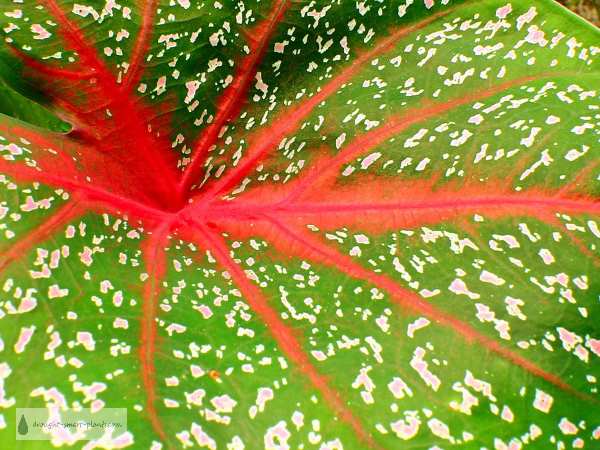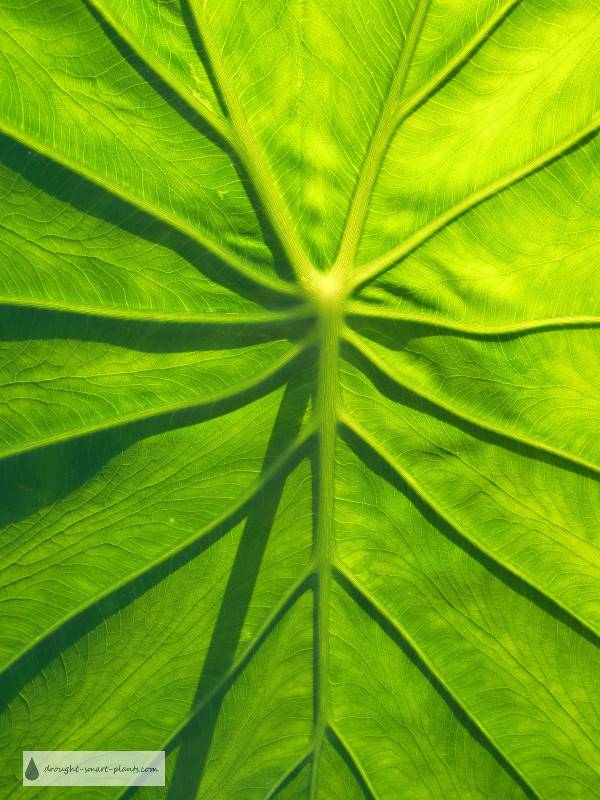Caladium and Colocasia
As an Amazon Associate I earn from qualifying purchases.
Other links on this site may lead to other companies that I’m associated with.
You’ve probably seen these plants; they have the most incredible huge leaves in all kinds of colors and patterns, growing among ferns and other shade loving plants.

There are two different genera that are called Elephant Ear, and they need slightly different care.
The genus Calladium are actually a bulb, which in colder climates, because they can’t stand any frost, must be dug up and brought inside for a dormant period.
In areas like Florida or other places that don’t get any cold, they can be left outdoors.
They prefer a shady spot, needing similar conditions of high humidity and soil with lots of organic matter.

There are lots of different varieties to choose from; white splotched, red veined, or bright pink variegation.
They grow well in pots, which can be displayed by just burying the pot in the garden, making them super easy to pull out for the winter. They have to be allowed to dry out, and can be left in the pot, or put into a mesh bag or pantyhose to prevent mold while in storage.
The best display will be with three tubers for each 8″ pot, or five or six for a 12″ pot.
Fill the pot with all purpose potting soil and a little additional bone meal, put the tubers with the bumps facing upwards – this is where the leaves will emerge.
Water well, then put them in a bright window to sprout. Don’t let them dry out, but don’t let them sit in water either.
Once the ground has warmed in the garden, place the pots in a hole in the bed. Mulch well, and make sure they are watered in the heat of summer for an eyecatching tropical display.

Colocasia is also a bulb, which has been cultivated as ‘taro’ for centuries. In Hawaii it’s known as ‘poi’.
There are also many ornamental types, bred for unusually shaped and textured leaves, smaller size and other attributes.
It grows in a wet soil, in partial shade. They do exceptionally well surrounding a pond as a bog plant, where they can get as much moisture as they want. Their size is dependent on how much water they are given, so for smaller plants, plant them in a pot where you can adjust it as needed.
Because the leaves contain calcium oxalate, some gardeners are sensitive to this, so wear gloves and wash your hands after caring for the plant.
As the leaves can get quite large, they’re often used as hypertufa molds for planters or fountains. For a great description and argument about this species, check out Exotic Rainforest.

